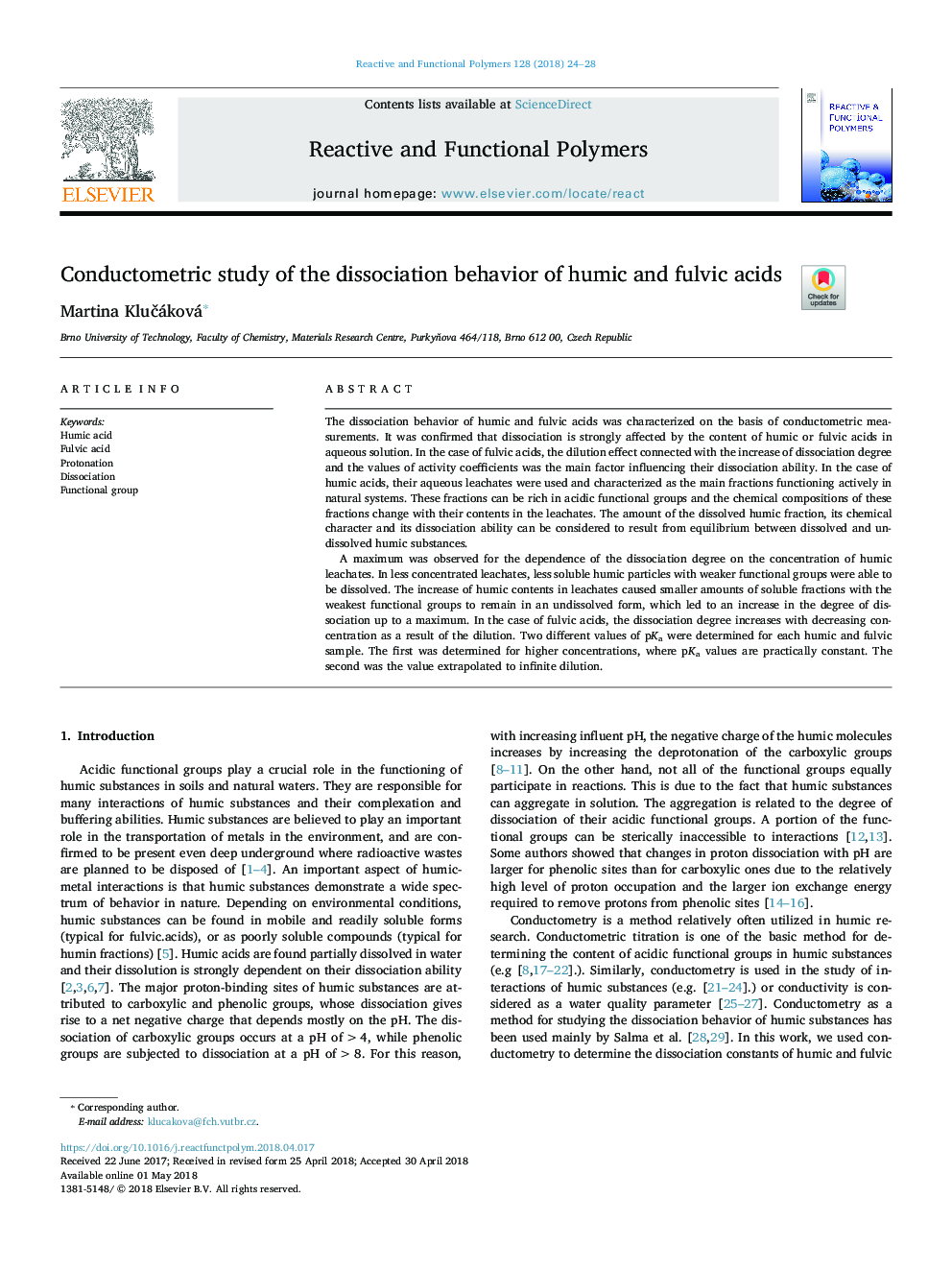| Article ID | Journal | Published Year | Pages | File Type |
|---|---|---|---|---|
| 7826178 | Reactive and Functional Polymers | 2018 | 5 Pages |
Abstract
A maximum was observed for the dependence of the dissociation degree on the concentration of humic leachates. In less concentrated leachates, less soluble humic particles with weaker functional groups were able to be dissolved. The increase of humic contents in leachates caused smaller amounts of soluble fractions with the weakest functional groups to remain in an undissolved form, which led to an increase in the degree of dissociation up to a maximum. In the case of fulvic acids, the dissociation degree increases with decreasing concentration as a result of the dilution. Two different values of pKa were determined for each humic and fulvic sample. The first was determined for higher concentrations, where pKa values are practically constant. The second was the value extrapolated to infinite dilution.
Related Topics
Physical Sciences and Engineering
Chemistry
Organic Chemistry
Authors
Martina KluÄáková,
